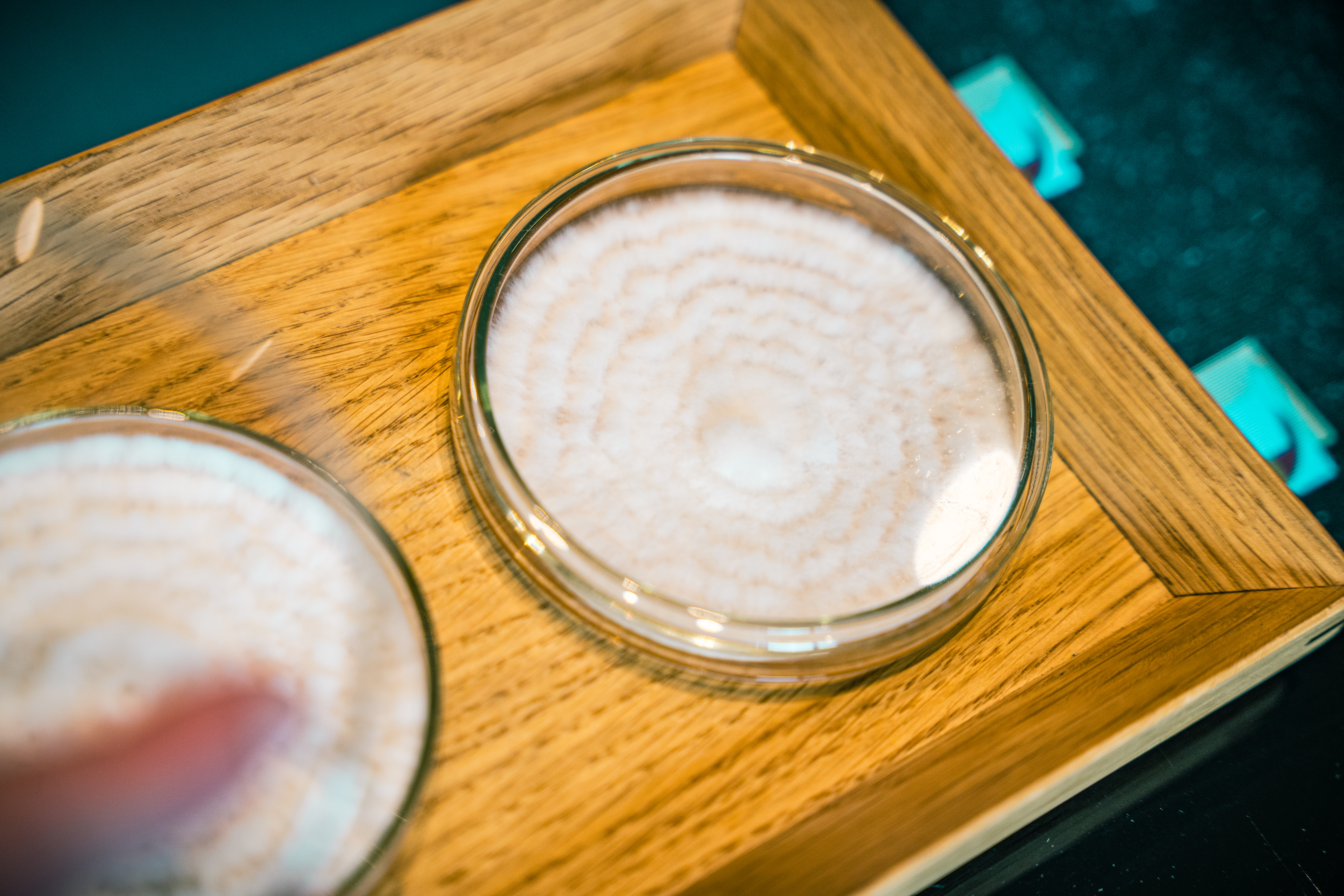Who doesn't love a nice big oven-baked portobello, or a risotto with wild mushrooms. From Japan to Italy, many cultures like to highlight mushrooms on their menus. For the past few years – during a time when younger generations have moved to more plant-forward diets – mushrooms have even transitioned from the sides of our plates to the center because of their sustainable nature and flavorful character.
Mushrooms have historically been a leading tastemaker in our food because of their rich umami quality. Derived from the Japanese word umami, meaning “delicious,” umami (pronounced oo-MAH-mee) is described as a savory, brothy, rich or meaty taste sensation. To scientists, umami indicates a high level of glutamate, an amino acid and building block of protein. To chefs and food lovers, it’s a satisfying sense of deep, complete flavor that balances savory flavors and full-bodied taste with distinctive qualities of aroma and mouthfeel. Foods like mushrooms, tomatoes, Parmesan cheese and green tea are rich in umami.
Fermentation through fungi
Although there’s a rise in the popularity of mushrooms on our plates and in products, fungi are present in more of our foods than many realize. Think about it: what do bread, beer, chocolate and wine have in common? They’re all created through yeast fermentation. They are single cell fungi with an enormous impact on food and beverage production that have been used for eons, before Louis Pasteur even studied the role of yeasts in the mid-1800’s. Through this process of fermentation, yeasts generate carbon dioxide and alcohol, and this metabolic activity is key for dough leavening and multiple cereal, grains, and fruits brewing.
Saccharomyces cerevisiae is the most popular representative of yeasts involved in food fermentation. However, there are a number of lesser known yeasts related to food production that may work in conjunction with bacteria and other fungi. In some cases, they can also be sources of flavors, colors and vitamins. Another fungal species that adds unique flavoring to food is Penicillium roqueforti, which contributes to the unique taste of the world-renowned Roquefort blue cheese.
But it’s not just yeast that helps us to create tasty products. In Japanese cuisine Aspergillus oryzae, also known as kōji mold, has been used for centuries to create popular foods like soy sauce, miso, mirin and sake. Nowadays, the use of Koji has also penetrated the fine dining scene in Europe and the US. Chefs Jeremy Umansky and Rich Shih are leaders in the culinary power of this unique ingredient; their book Koji Alchemy delivers a comprehensive look at modern koji use around the world, including using it to rapidly age charcuterie, cheese, and other ferments. As many high end restaurants are experimenting and opening test kitchens and laboratories, the use of fungi to ferment has become essential in creating more sustainable, tasty plant based dishes.
Restaurant Alchemist** in Copenhagen has even taken it a step further by creating a dish in which mycelium - the network of threads, called hyphae, from which mushrooms grow - isn’t used as an ingredient, but rather is the star of the show. For the dish, mushroom broth gel is inoculated with oyster mushroom mycelium and served in a petri dish.

"What’s extra special is that the mycelium dish is not cooked, but actually grown in our kitchen", says Diego Prado, head of Alchemist Explore, their test kitchen. Although plant based dishes and products created through fermentation with fungi might sound experimental, there’s no doubt that this trend will find its way from fine dining kitchens to more mainstream cuisine.
At Noma*** in Copenhagen – four times named the world’s best restaurant – the use of koji is also very popular. Every dish in the restaurant includes some form of fermentation, and many of their fermented products are made with this Japanese mold. During the recent pandemic, the restaurant opened Noma Projects, a new research space where their team develops plant based pantry products to help and inspire individuals to create greener, more delicious meals at home. The first product they released was a smoked mushroom garum. Garum has been a delicacy for thousands of years, and is originally a fermented fish sauce made across the Mediterranean basin. Where traditional recipes rely on the naturally occurring enzymes in fish intestines to break down the fish into a sauce, Noma Project uses koji to recreate a similar process.
By utilizing koji, it’s possible to experiment with a wider range of high-protein ingredients that are found in nature, adapting the same process but with different ingredients to extract umami-rich flavors from them. “We realized that there was an opportunity to also expand the role of garum to other kingdoms, such as vegetables or even fungi, to produce powerful flavors as well. Koji also proved to be very advantageous (and faster) to create sauces that were both unique in flavor and still delicate”, Noma states on her website.
In the first part of this series, we look at the many fantastic functions of fungi